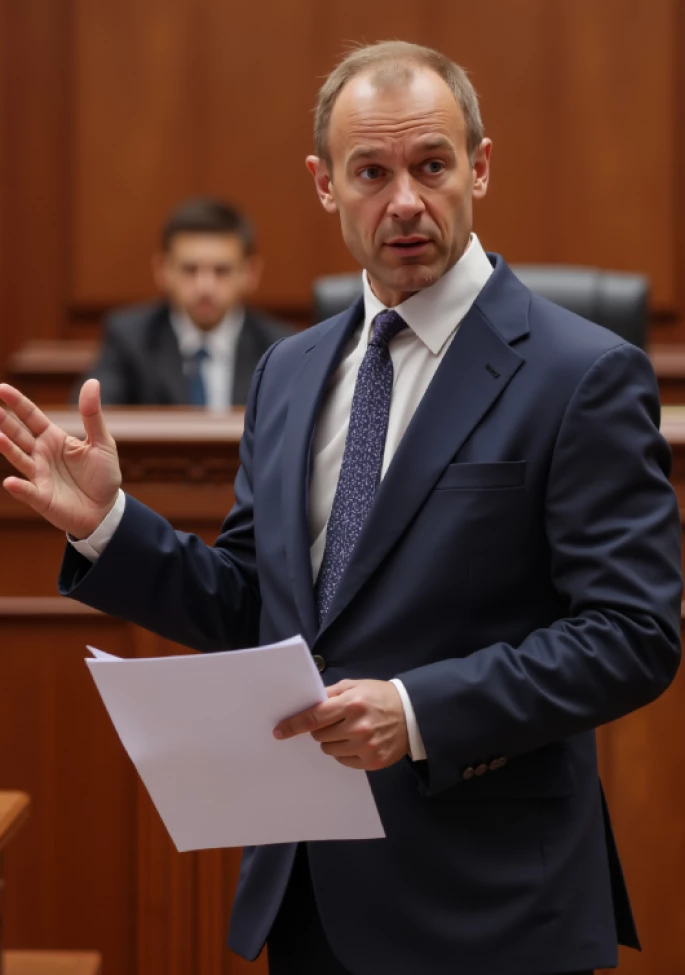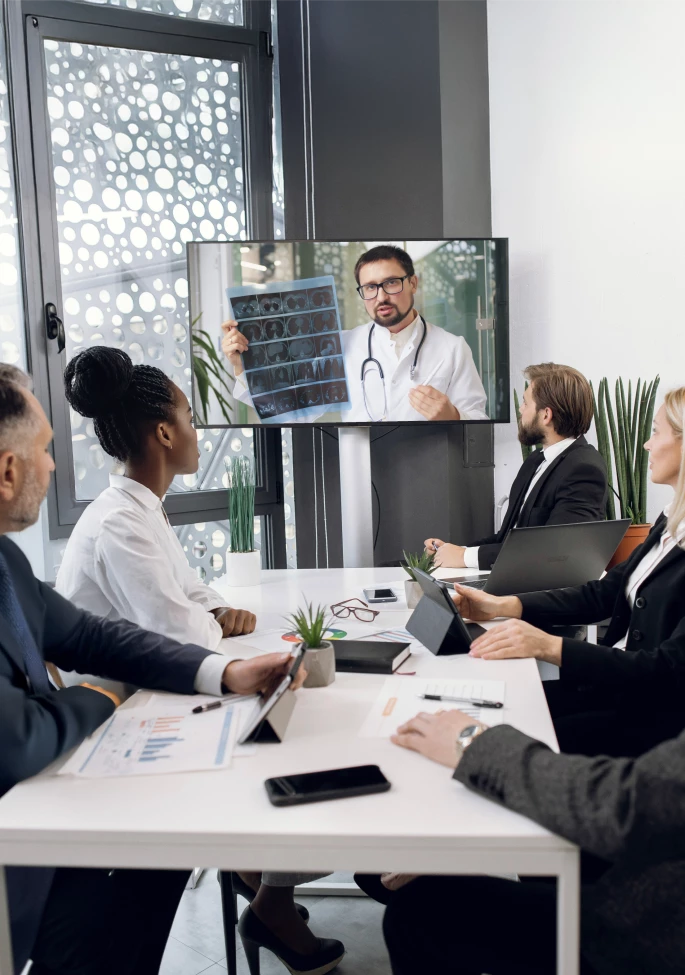Clear, compelling visuals can be critical to achieving favorable outcomes in high-stakes disputes. As a Certified Medical Illustrator with more than three decades of litigation support experience, Philip (Phil) Ashley knows this is particularly true in cases involving complex medical procedures and injuries. He recently shared his insights into the powerful role that medical demonstratives play in legal strategy and their synergy with medical expert witness testimony.
Teaching Juries Through Visual and Verbal Evidence
Medical illustrators and medical experts serve different but complementary roles. Both are tasked with making complex narratives more accessible to a non-medical audience. While experts provide objective clinical insight, illustrators focus on how best to communicate that insight to a jury.
Most of Phil’s work involves personal injury and medical malpractice litigation. He explained, “Injuries from accident or catastrophic events, as well as errors in surgical technique or clinical assessment, require some sort of exhibit to substantiate or demonstrate the mechanism of injury and satisfy a specific burden of proof.” Phil creates medical illustrations and 3D models of the plaintiff’s injuries and clinical treatments or surgical procedures required to repair the injuries. He also prepares “mechanism of injury” illustrations to depict how those injuries occurred.
These custom medical demonstratives “serve as a visual translation of the key moments in the experts’ opinions, a visual aid for those areas of clinical importance to better the jurors' understanding.” Through these visuals, experts can more effectively explain complex medical concepts, demonstrate the sequence of events in a surgical procedure, illustrate the extent of an injury, or highlight discrepancies in medical claims.
Building Demonstratives with Expert Collaboration
The creation of effective medical illustrations often involves close collaboration among the illustrator, attorney, and medical expert(s). Initially, the illustrator reviews the expert’s narrative reports and relevant clinical records, including imaging studies like X-rays, CTs, and MRIs. Phil usually works directly with the attorney to obtain these materials and supplemental items, such as the case complaint and photographs of the injuries. There are occasions when direct communication with medical experts is necessary. This can involve videoconferencing, emails, and preliminary sketches to establish a clear understanding of the desired graphics.
Once the legal team gives the green light on this collaborative “game plan,” Phil works independently and then submits final drafts for combined review and approval by the attorney and expert(s) to ensure the visuals align with the expressed opinions. He shared, “Revisions are rather uncommon, given all the groundwork of understanding established initially. My work reflects clinical opinions or specific recollections of a specific clinical event, so it’s important that what I provide is going to be in lockstep with their testimony.”
Ensuring Accuracy, Clarity, and Visual Impact
Injury photos are requested to enhance visual consistency and guide details like body type and skin tone, leading to what he calls “a reasonable likeness” that can help jurors connect with the case. Making the material accessible to the jury can be just as important as getting the anatomy right. “There is always a delicate balance between maintaining a simplicity of complex subject matter with the mere fact that what is being demonstrated is, in fact, quite complicated and involved,” he explains.
Terminology is another area where simplification can become an issue. Some clients prefer using extremely simple language in their exhibits; others opt for clinical terminology because they find it creates a more impactful and authentic exhibit, or they feel the medical expert is more comfortable using clinical terms during testimony. “It’s a matter of balancing their preference and trial tactics.”
A medical illustrator’s work involves careful consideration of medical accuracy, the client’s strategy, and the expected audience. When asked how he ensures this accuracy, Phil replied, “By researching the condition, instrument, or surgical technique in advance, and by reaching out to the medical experts directly with any questions or points of clarification before and during the process. The attorneys I’m working for are also an excellent resource for this kind of information, as they, too, are often researching and educating themselves on these very same clinical issues so they can craft their arguments from a much more well-informed position.”
Overcoming Challenges and Constraints
Time and budget constraints are common for trial teams, so Phil relies on clear communication to manage client expectations during the creation of medical demonstratives. “By being transparent early on, I’ve built trust with clients who now proactively send assignments in advance,” he shared. “This allows us to deliver high-quality work on time and at a fair cost.”
Of course, credibility is of utmost importance in litigation. Neutrality and precision are essential to both the visual and legal integrity of this work. “Nothing can be as frustrating as a client paying money for a medical demonstrative only to have their opponent object to their use and the court upholding those objections. Fortunately, to my knowledge, this has never happened to one of my exhibits.”
The ultimate challenge is to visually translate what a medical expert witness needs to explain, and Phil has received high praise from the experts he supports. “I’ve heard everything from ‘this illustration is like a photograph I would’ve taken’ to ‘I’d like to use this for my lectures.’” His goal is not just to support expert testimony, but to elevate it by turning technical facts into compelling visuals that jurors can understand and remember.
Beyond trial presentations, another challenge can be managing the emotional load of injury-related litigation. “When working intensely on a case where someone has suffered a tremendous loss or injury…you feel for them. It’s hard to remain clinically dispassionate and impartial while illustrating those injuries, but the courts do not favor any work that is sensationalized or exaggerated for dramatic effect. I pride myself on being a neutral element, regardless of which side I work for, but you can’t help but feel for people as a human being.”
Using Demonstratives to Drive Case Outcomes
When asked to share medical illustration success stories, Phil quipped, “A picture is worth a thousand words, so I’d say my work has always contributed to a better understanding of the relevant clinical aspects of a case.” He did recall one particularly impactful case where his work helped secure a favorable result: “It involved creating illustrations and an animation depicting a surgical error during a hip replacement procedure. The defendant's surgeon was alleged to have negligently placed two screws into major vessels of the pelvis, blocking blood flow to the plaintiff’s leg and requiring multiple painful, disfiguring surgeries to repair.”
Although the legal team initially believed there were no imaging studies available, Phil uncovered proof of multiple CT and MRI scans during his review of the medical records. “I advised the client that, without those studies, any demonstrative might be proven to be inaccurate if presented by opposing counsel, so our client was able to obtain them on an expedited request.” Armed with the imaging, Phil and the IMS team created a precise, 3D-modeled animation that clearly demonstrated how the surgeon’s error caused the injury. The resulting visuals left little room for dispute and played a key role in achieving a successful settlement
Phil also shared a more personal story: “I was once asked to be present at a mediation to help our clients explain the plaintiff’s injuries and surgical procedures more clearly to the mediator. We created a series of illustrations and graphics detailing all that their client endured from a motorcycle accident with a speeding delivery truck, and they wanted me to serve as a ‘second chair’ during their presentation. I’d never done that before and have not since, and I’m proud to say the outcome achieved was a tremendous result for the plaintiff.”
Phil recalled another time when he created a life-size portrait illustration of a plaintiff to depict the multiple injuries he sustained all over his body due to a motor vehicle accident. Following the trial, which ended in a significant plaintiff verdict, the plaintiff asked his attorney if he could keep the illustration because he liked it so much. He shared, “The fact that my work resonated so positively with him is an even greater compliment.”
Partnering with Litigation Support Professionals
Skilled legal teams know that the effective fusion of medical demonstratives and expert testimony can transform complex case facts into favorable outcomes. At IMS, our integrated services are designed to streamline all your litigation support needs.
In addition to a range of visual communication tools, we provide tailored expert witness solutions. This includes a dedicated medical expert witness services division to help attorneys overcome challenges related to sourcing medical experts for injury-related disputes while managing critical deadlines. Visit imslegal.co.uk to learn how we can support your case today.






